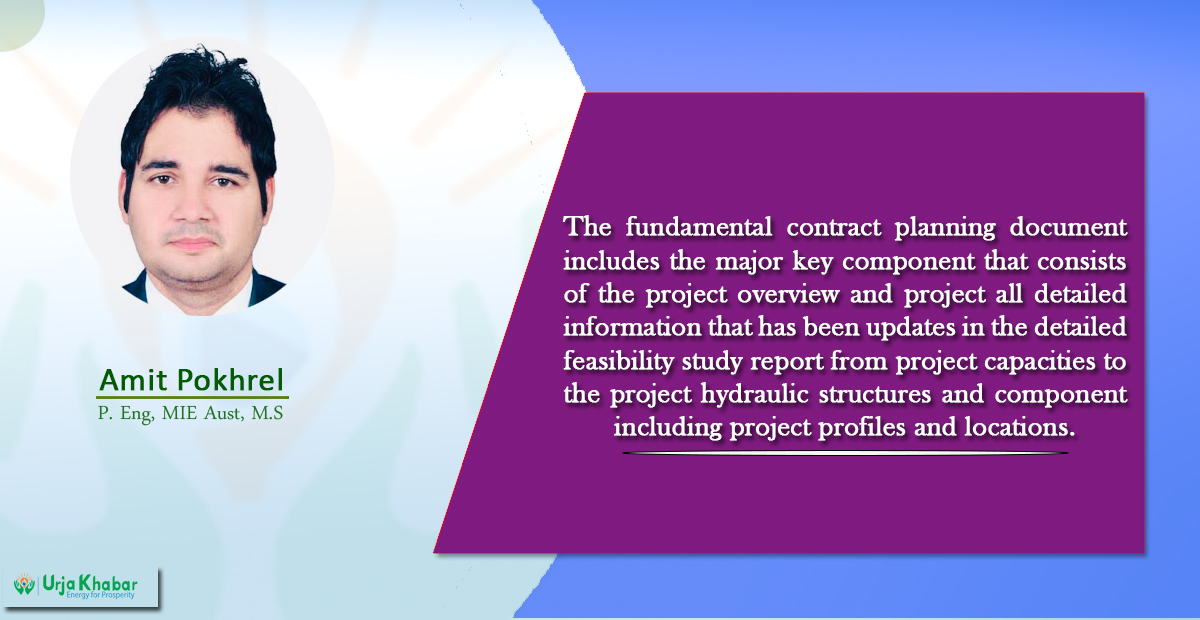
The fundamental Contract Planning is a crucial for construction practice that inherited a comprehensive guideline for the project developers and stakeholders to understand about the project, it’s scope and objectives, the time framework, and the overall processes & methodologies till the execution of the project activities. This article clearly outlines the importance of the terms and conditions that is set up for the condition of contracts ensuring that all the parties involved in the processes to make it a raw and credible document that are taken into consideration at the various stages of the project development work.
The construction contract is an agreement between the parties for the performance of work through the supply of all resources. First, a valid contract must be significantly and sufficiently certain to have a practical meaning and before execution the parties must have agreed on all terms and conditions. Second, there must also be an agreement on the consideration and on the payment terms. Third, the contract must be in writing.

A contract is not easily enforceable if it remains entirely as an oral agreement and without written evidence. It is worth bearing in mind that the contract of magnitude in size and value, crystal clear with guaranteed protection against future construction disputes, and capable of being understood by all parties to the agreement has probably written.
In addition, Letter of intent should only be used in special circumstances and should only be issued after all contractual matters are settled or specially delineated in the letter of intent as being unresolved. The letter of intent shall be valid only if it contains, at the very least, confirmation of the client’s intent to award a contract to a named contractor, reference to the scope of work in the invitation to bid, the consideration (i.e., pricing of work) or an invitation to submit monthly invoices based on percentages of work completed against the price quoted in the contractor’s bid proposal, the effective date of the contract (being the date when the client receives the contractor’s confirmation by official letter) and the reference to the receipt of the contractor’s agreement to the preceding. A letter of intent is defined as a contract designed for interim use only that sets forth certain agreed terms and conditions remaining to be negotiated.

The fundamental contract planning document includes the major key component that consists of the project overview and project all detailed information that has been updates in the detailed feasibility study report from project capacities to the project hydraulic structures and component including project profiles and locations.
Similarly, it also consists of the project scope of work that includes a detailed description of the work to be performed including detailed activities and sub activities of the assigned tasks and scope, deliverables and timelines and milestones to achieve. A clear definition of the roles and responsibilities of each project stakeholders (developers, contractors) and other relevant parties shall be defined properly in the Agreement. As defined above, the payment terms play a major role in furnishing the contractual arrangements to construct and develop the projects. A detailed payment terms shall be outlined in the Agreement for the work done that has been agreed with the client to perform the activities, frequency and amount of the payment in instalments. In addition, a schedule, project schedule of start to finish has been setup to understand the overall project progress and understanding critical path that can affect the work of the client to meet the setup and critical deadlines. As the project runs, the quality control and quality assurance plans shall be presented to the client and or the Engineer for the approval from the contractor as the quality assurance plan shall be implemented throughout the project by the individual contractors.
In connection with the fundamental approach of the project activities, it is necessary to prepare and provide the risk management plans. The risk management plan shall be submitted at the beginning of the submission of the technical and financial bid to the client that shall needs to be submitted on the said timeline that has been agreed with the client which may be monthly, quarterly, semi-annually and annually. When the work is continuously in full-fledge and if any dispute arises during construction or any supplies, the parties shall settle all the disputes amicably as a project might suffer badly if the disputes shall not be resolved quickly to streamline the project that can occurred by any reasons like variation, additional new work order, any design change, or and any such other claim that has been presented during the project construction.
Project management, quality assurances, engineering, safety, contracts, procurement, construction, cost control, schedule control, workers & personnel, administration, legal, insurance, accounting, and each and other discipline of the client’s organization will be governed by the project procedures that should be written and produced at the very beginning of the project construction and development works.
It is interesting and mindful to reflect that on most large projects there seems to be insufficient staffing in the early stages when voluminous types of feasibility study report, Environment impact assessment documents, bidding documents, contract, manuals, designs, and procedures are in simultaneous preparation. However, at the tail end of the projects there is a tendency to retain people who have very little to occupy themselves.
Procedures are descriptions of practices to be adhered to and definitions of associated responsibilities. They are necessary and valuable in the conduct of the work, but sharing should not be allowed to get out of hand to the extent that there is a procedure for every natural function of the project work. The contract value represents the established and approved value of a contract at any given time and are involved in the formulation of project control estimates, cost forecasts, and commitment values.
High standard of ethics, values and fairness are to be maintained in client-contractor relationships. All contracts are to be in writing. Every effort shall be made to realize execution of the contract documents prior to start of work, but if this is not possible then the adequate documentary cover must be in place before commencement of project work. Only technically and financially qualified contractors shall be invited to bid for the major project work and competitive bidding shall be employed based on the evaluation criteria set up for the bidding document. The privatization shall also follow the same pattern of evaluating the technically and financially sound contractors for your major work done. Negotiated contracts shall also be considerable in certain circumstances if all the grounds meet the expectation for positive results. After the processes, the final processes shall be outlined based on the lump sum contracting that is more preferred to the practice setup for the awarded work. The most common and most preferred practice. Contractor performance claims will be properly examined and scrutinized and resolved in a fair and reasonable manner.
Every endeavour will be made to produce good contracts that are succinct and precise in intent to minimize ambiguities and to lessen the likelihood of disputes. Claim that cannot be resolved within the confines of project management may, as a last resort, be referred to arbitration. Should access to suitable arbitration be impractical or uneconomical, an alternative in the appointment of an expert acceptable to both parties, whose judgement in the matter would be final and binding.
In response to the adopt good contract management, the parties must have a more experienced and competent contract engineers and managers who shall posses the understanding of the contractual agreements from project to project. The authority of the contract, varies from project to project. In some construction undertakings, the contract is the client’s primary contact, chairs every meeting with the parties and carries a great deal of situations. Generally, the contract has the overall administration management and control of all contracts assigned to him and shall be accountable for all kinds of communications, documentations, project status reporting, project payment verifications and recommendations, changes & offsets, claims and best engineering and construction business practice. Of all members of the construction team like design engineers, geologist, quality control, project managers, environmental expert, site managers, project coordinators, junior engineers, the contract engineers’ managers are the one especially governed by the project procedures and he is responsible for the contract performance monitoring and all critical activities that can delay the project activities.
In the front-end planning of a complex infrastructure projects, most client organization will establish a concrete methodology to adopt the risk management to cater the situation that is applicable to the various stages of the project from inception to execution. When a project developer decides to embark on a new construction venture, the main objectives of the client and their team is to appoint a caliber contractor and subcontractor to timely delivery of the works as they shall need to meet the RCOD as per the applicable guidelines under the governmental decision bodies. Therefore, to manage and construct the projects, every individual of the project developers’ team, stakeholders most give their prior attention to make successful as huge investment has been invested in the study and construction of the projects globally.
The author of this article is a Professional Civil Engineer and a Contract management expert.
